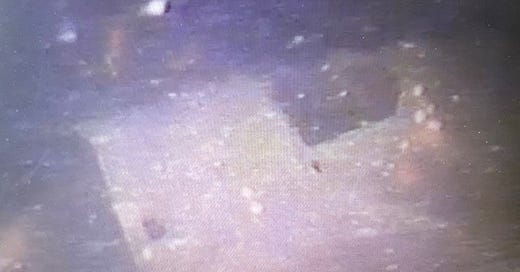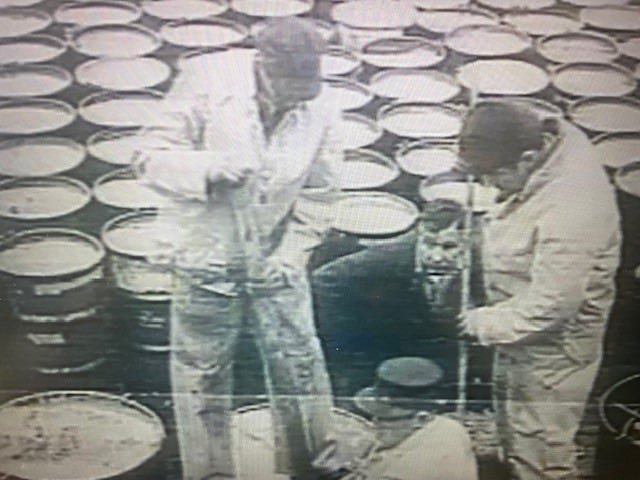Not just here: 'Out of Sight, Out of Mind' was national policy
We’ll never know how much was dumped, nor what it might have done
In the first two parts of this series, "Out of Sight, Out of Mind: The Foul Area" and "Gangway for the Atomic Garbageman," we visited a fisherman injured by barrels dumped offshore, and found the man who dumped thousands of them, radioactive and hazardous waste, into waters north of here, east of Boston, known as “The Foul Area.”
George Perry relived his times and work with candor; everything he had done was legal, even celebrated. As I listened to his amazing tale from a bungalow in Hyannis, I realized something:
George couldn’t have been the only person doing this.
It took another month of digging and diving, uncovering EPA records and old Congressional testimony, to find that the feds acknowledged three more offshore dumpsites. By their reckoning, the four handled 95 percent of the nation’s radioactive material dumped in the oceans from 1947 until 1962.
One was at the Farallon Islands in the Pacific Ocean more than 40 miles west of San Francisco, in water more than 3000 feet deep. Two were off Delaware and Maryland, 120 and 200 miles from land, in water 10,000 feet deep and more.
And then there was George, less than 20 miles off Boston, 250 feet deep, in grounds laced with fishing trawlers and pleasure boats, literally within a spit of the food chain.
Fed estimates of how much was deposited overboard, at least in Boston, were bullshit:
“The Atomic Energy (Commission) asked me once in about 1955 how much I had dumped,” remembered George. “I told them 3300 barrels.” He sat back. “I hadn’t the faintest idea how much I had dumped,” he guffawed. “So that became the record.”
The EPA concluded that 4008 radioactive barrels were dumped in the Foul Area by the time the practice stopped. That figure, fabricated to begin with, would not have included all the barrels George dumped that were not radioactive but still full of poisons.
“Don’t blame me on those numbers,” growled George. “I kept a record of everything I did, all the way back to 1947. When I sold the company in 1962 (the year the feds banned radioactive waste dumping in US waters) I wanted to give a copy of it to the Navy, the Coast Guard, the Atomic Energy Commission. None of them wanted it. Not one. Why? I really don’t know.”
“So what happened to it?” I asked, praying he would tell me to ask the missus to produce his ledger, like he did with his scrapbook.
“I took all those records, I tore them up, and I burned them,” he said.
Dump’em, shoot’em, burn’em. George was the living practitioner of what I decided was the driving national philosophy:
Out of sight, out of mind.
The whole thing obsessed me. I wrote a long piece for Boston Magazine, then went to one of the Boston commercial television stations and got a camera crew to George’s house to get him on tape — no telling how long he’d still be around and willing.
Then I convinced Dave Wiley, who now works at Stellwagen National Marine Sanctuary, to deploy what they call sidescan sonar, video camera attached, to locate metal underwater and send up pictures. Sure enough, he found dozens of drums on green murky bottom; a big lobster claw stabbed at the camera out of one rusted version.
I kept going, convinced friends at National Public Television to recommend me to an affiliate in San Jose, California, found a camera guy and captain willing to steam 40 miles into the Pacific until we found craggy, seal-infested chunks of rock, the Farallon Islands. We tromped around and shot meaningless video I could use as cover to talk about dumping out there.
My last gambit was to London for a meeting of the International Atomic Energy Commission, at which they voted, finally, to ban radioactive waste dumping in international waters (not that it was enforceable).
The pieces fit into a documentary that aired on National Public Television. “Out of Sight, Out of Mind” won an Emmy for best local documentary, also best documentary from festivals in New York, Chicago, and Iowa. I stood at podiums in rented tuxes, stumbling through thanks, with questions and answers I did not share:
Will these few moments of recognition change anything?
No, I thought.
Could the barrels be picked up, cleaned up, disposed of in some better way?
No, I thought, that would create even more exposure and spread.
Could the whole area be capped somehow?
Maybe, I thought, there was talk about laying a blanket of dredge spoils, though the dumping was not truly localized.
Are there things we are doing now that we’ll look back on and find as mindless, damaging and stupid as what we did then?
Yes, I thought.
Haven’t subscribed yet? With all due respect, why not? Make it possible to see a Voice and support good reporting, strong perspectives, unique Cape Cod takes every week. All that for far less than a cup of coffee.
Here’s a serious question:
If reporting like this is not worth supporting, what is?
Please, subscribe:
https://sethrolbein.substack.com/welcome
And if you are into Instagram, want to see some additional material, maybe share the work, here you go:





